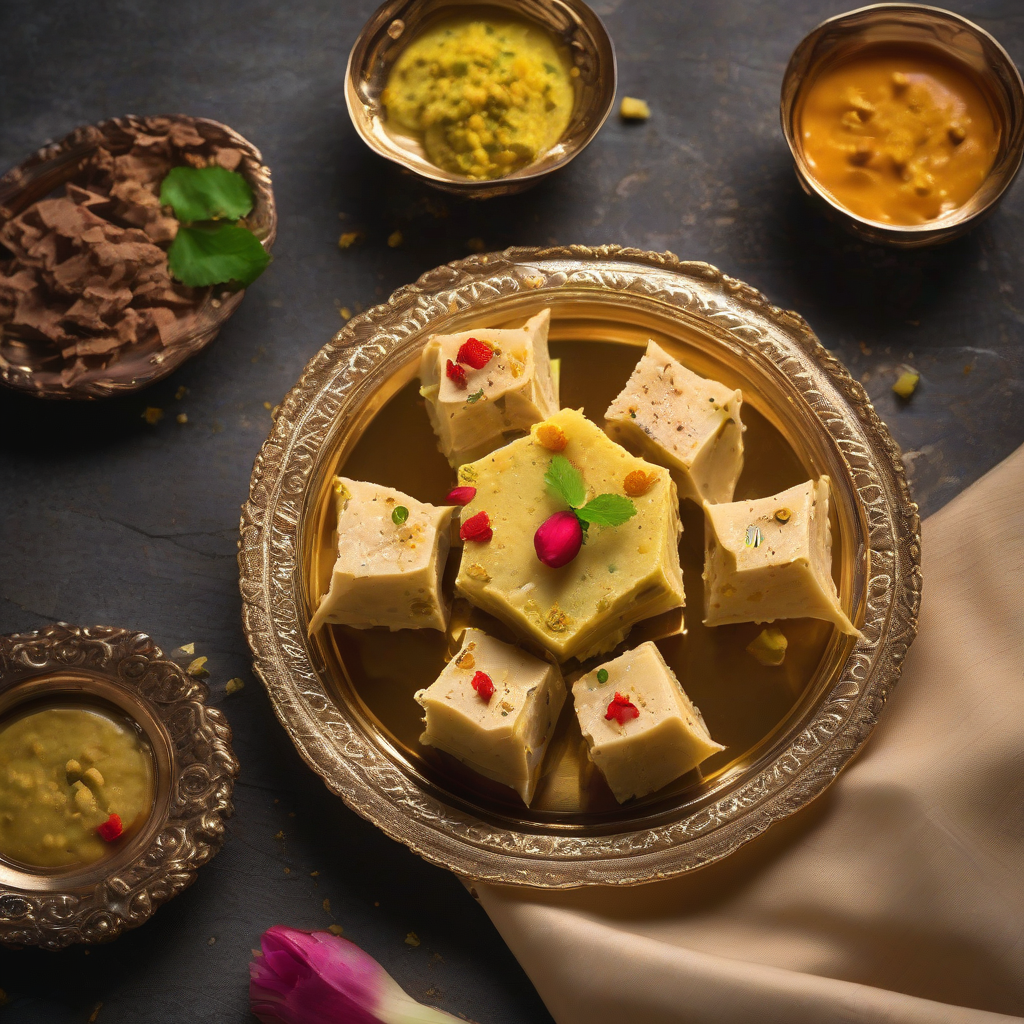Meetha Mania: Soan Papdi – The Flaky Delight That Melts in Your Mouth!
Namaste Doston! Sat Sri Akal! Kem Cho? Chef Curry Do-Pyaza here, back in your kitchens and ready to whip up some magic! Today, we’re diving deep into the sweet, flaky, and utterly irresistible world of Soan Papdi. This isn’t just a sweet; it’s a memory, a tradition, a little piece of India wrapped in delicate layers.
Soan Papdi is like that comforting hug from your grandma – familiar, sweet, and always welcome. You’ll find it gracing sweet shops during Diwali, twinkling like the festive lights themselves. It’s a star during Raksha Bandhan, shared between siblings with love. And honestly, any time you need a little meetha pick-me-up, Soan Papdi is your go-to champion.
A Sweet History Lesson
The origins of Soan Papdi are a bit hazy, shrouded in the sweet mists of time. Some say it originated in Punjab, while others claim Uttar Pradesh as its birthplace. Regardless of its precise location, one thing is clear: this sweet has been around for generations, delighting taste buds and bringing smiles to faces. It is believed to be inspired by the Persian sweet, Sohan, but with a uniquely Indian twist.
Let’s Get Cooking!
Preparation Time: 20 minutes
Cooking Time: 45 minutes
Ingredients:
- Maida (All-Purpose Flour): 1 cup
- Besan (Gram Flour): 1 cup
- Cheeni (Sugar): 2 cups
- Ghee (Clarified Butter): 1 cup + 2 tablespoons
- Elaichi Powder (Cardamom Powder): 1 teaspoon
- Badam (Almonds), slivered: ¼ cup
- Pista (Pistachios), slivered: ¼ cup
- Water: ¾ cup
- Kesar (Saffron) strands (optional): a pinch
Instructions:
- Roasting the Flour: In a heavy-bottomed pan or wok (kadai), dry roast the maida and besan separately over low heat. Keep stirring constantly to prevent burning. The maida should turn a light golden brown and release a nutty aroma. The besan will also turn golden and fragrant. This usually takes about 10-15 minutes for each flour. Remove from the pan and set aside to cool completely.
- Making the Sugar Syrup: In a separate heavy-bottomed pan, combine the sugar and water. Heat over medium heat, stirring until the sugar dissolves completely. Continue to cook without stirring until the syrup reaches a one-string consistency. To check this, take a small drop of syrup between your thumb and forefinger. When you pull them apart, a single string should form. This takes about 15-20 minutes. Add the kesar (saffron) strands if using, for a lovely color and aroma.
- The Magic Begins: Now comes the tricky part, but don’t worry, you’ve got this! Add the ghee to the roasted flour mixture. Mix well to form a crumbly dough.
- Pulling the Threads: Gradually add the hot sugar syrup to the flour mixture, mixing continuously with two forks or spoons. The mixture will start to become stringy and lacy. This is where the magic happens! Keep pulling and stretching the mixture with the forks, incorporating air and creating those delicate layers.
- Setting the Soan Papdi: Grease a large tray or plate with ghee. Spread the Soan Papdi mixture evenly on the tray. Sprinkle with slivered almonds and pistachios. Gently press them into the mixture.
- Cooling and Cutting: Allow the Soan Papdi to cool completely at room temperature. Once cooled, cut it into squares or diamond shapes.
Tips for Sweet Success:
- Low and Slow: Roasting the flour is crucial. Do it on low heat to avoid burning. Burnt flour will ruin the taste.
- One-String Wonder: Achieving the correct sugar syrup consistency is key. Too thick, and the Soan Papdi will be hard. Too thin, and it will be sticky.
- Patience is a Virtue: The pulling and stretching process takes time and effort. Don’t rush it. The more you pull, the flakier your Soan Papdi will be.
- Fresh is Best: Homemade Soan Papdi tastes best when it’s fresh. Store it in an airtight container at room temperature for up to a week.
Cooking it Your Way:
- Gas Stove: The traditional method, and perfectly fine if you’re careful with the heat.
- Induction Stove: Offers more precise temperature control, which can be helpful for the sugar syrup.
- Microwave: Not recommended for the entire process, but you can use it to gently warm the ghee before adding it to the flour.
- Oven: Roasting the flour in the oven at a low temperature (around 250°F) is a hands-off way to achieve even roasting.
Nutritional Information (approximate, per serving):
- Calories: 200-250
- Fat: 10-15g
- Carbohydrates: 25-30g
- Protein: 3-5g
Serving Suggestions:
- Enjoy it as is, with a cup of hot chai or coffee.
- Garnish with extra nuts and a sprinkle of cardamom powder.
- Serve it as part of a festive sweet platter.
- Wrap it in a pretty box and gift it to your loved ones.
So there you have it, folks! My version of the classic Soan Papdi. I know it might seem a little intimidating at first, but trust me, the effort is worth it. The joy of creating this delicate, melt-in-your-mouth sweet is truly rewarding.
Now, go forth and create some sweet memories! Make this Soan Papdi at home, share it with your family and friends, and let the sweetness spread!
Until next time, keep cooking, keep smiling, and keep the meetha flowing!
Your pal,
Chef Curry Do-Pyaza!
